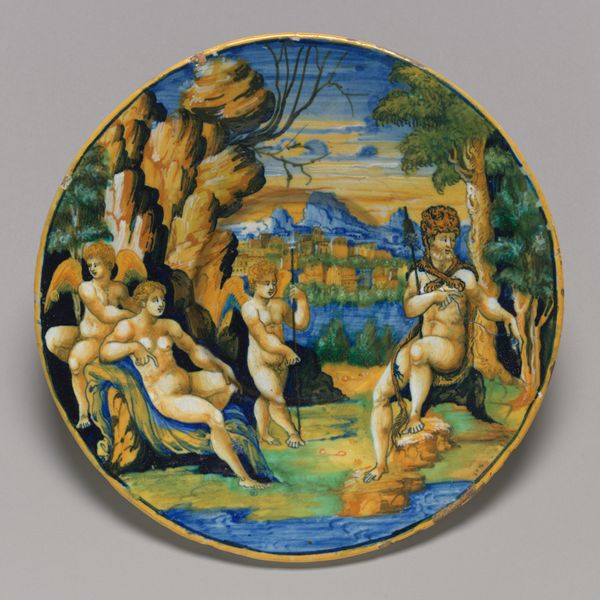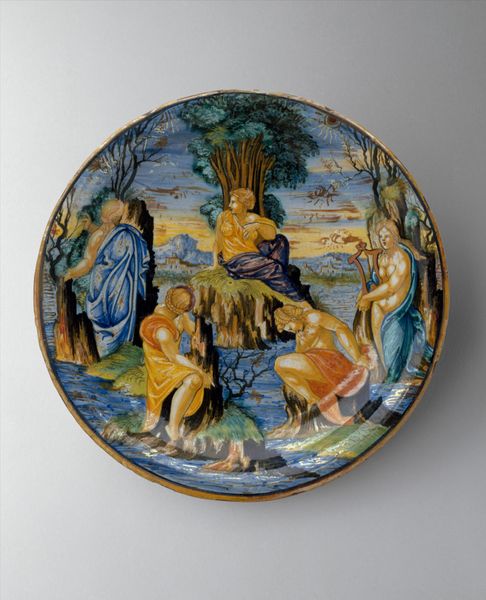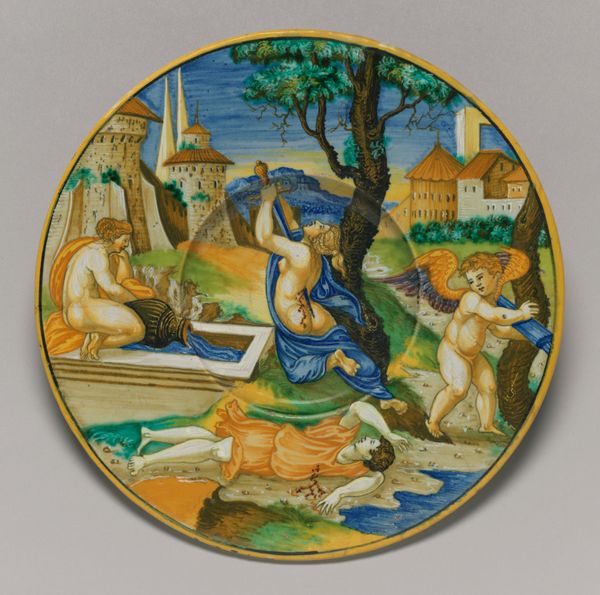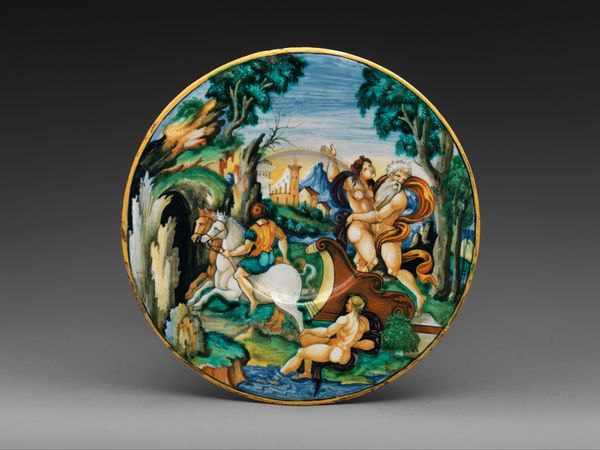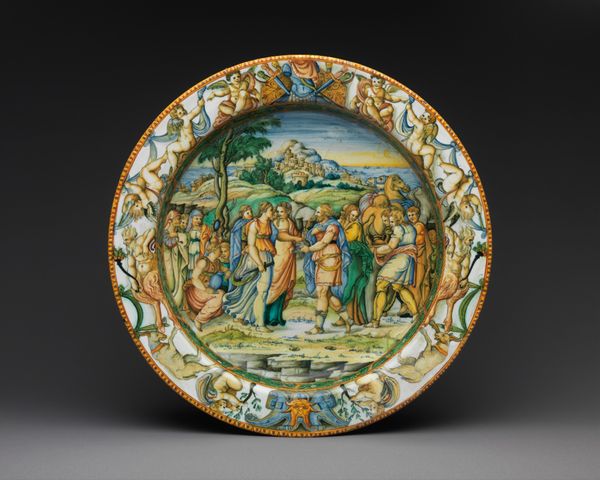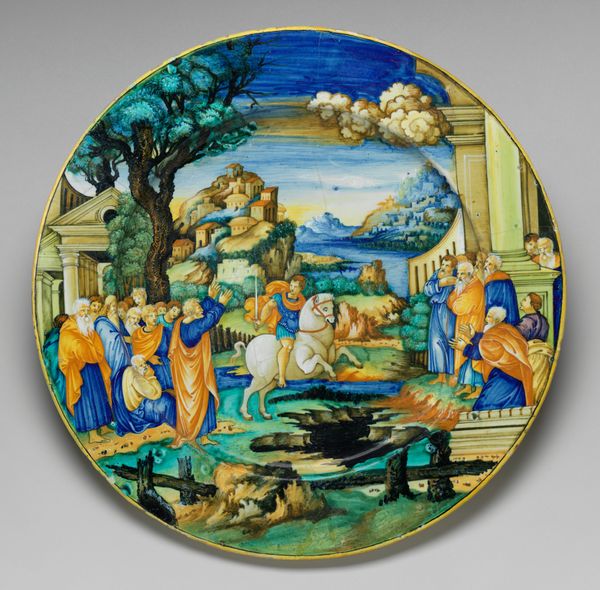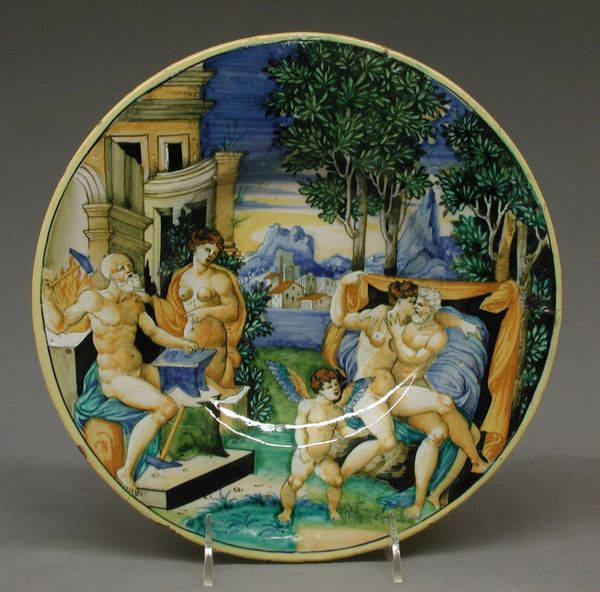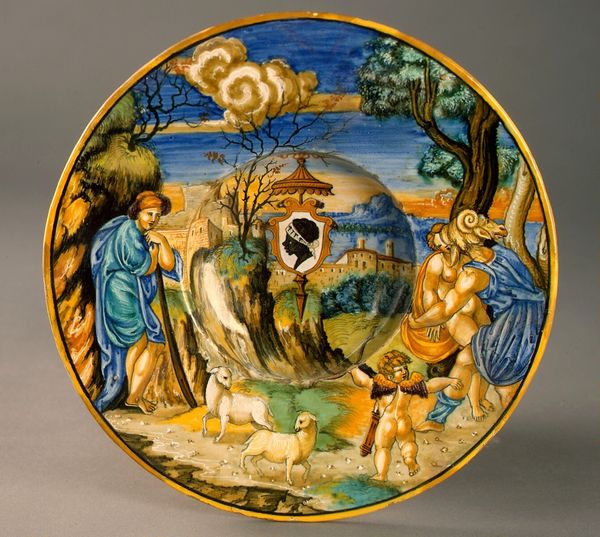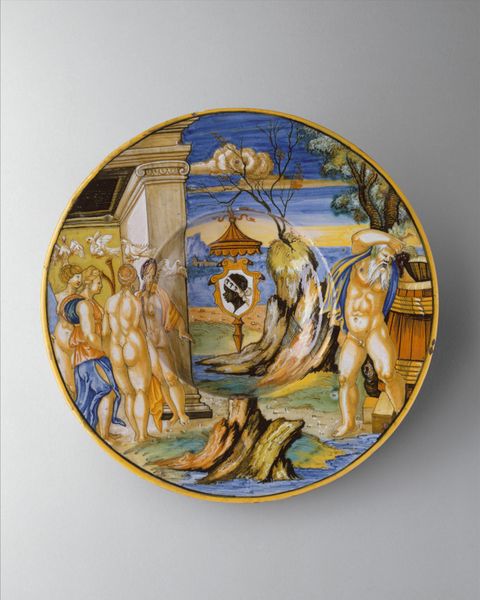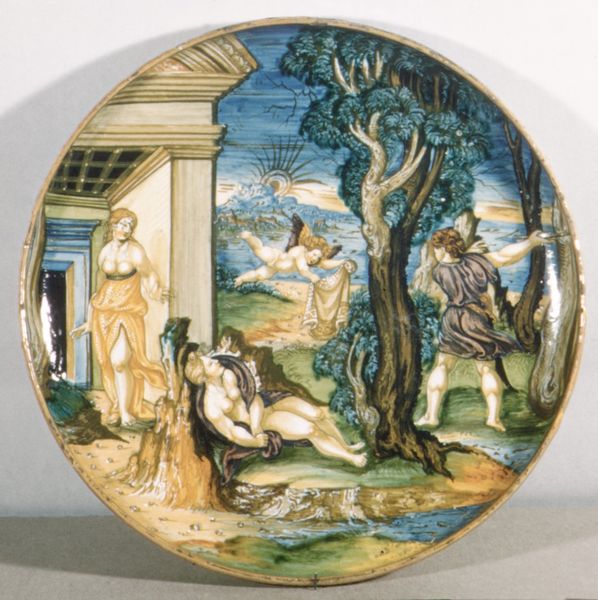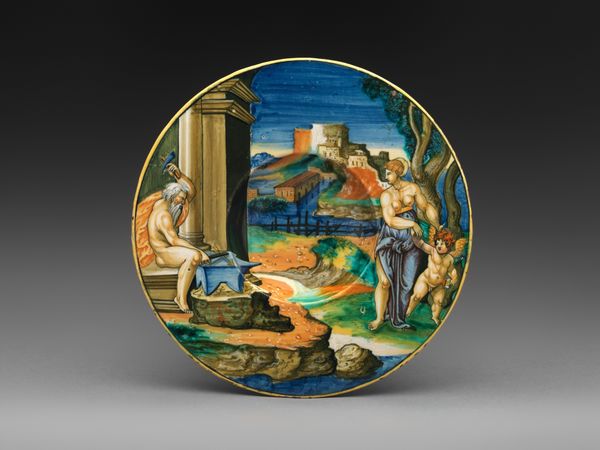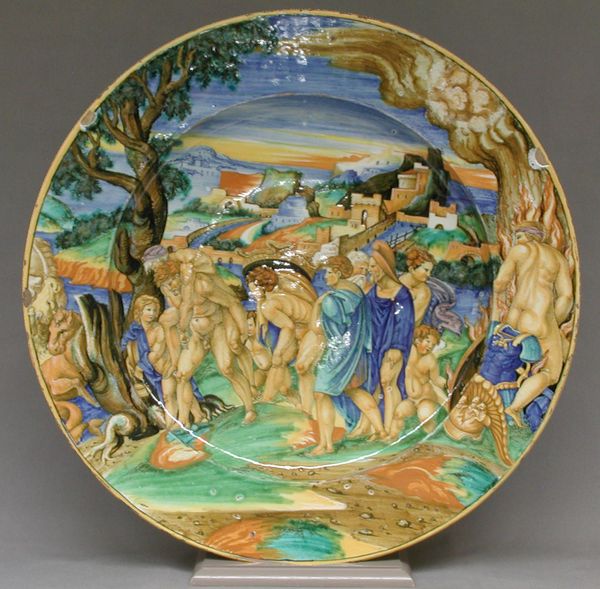
painting, ceramic
#
painting
#
ceramic
#
11_renaissance
#
oil painting
#
naive art
#
genre-painting
#
decorative-art
#
italian-renaissance
#
nude
Dimensions: overall (height by diameter): 4 × 26 cm (1 9/16 × 10 1/4 in.)
Copyright: National Gallery of Art: CC0 1.0
This plate, made by the Painter of the Milan Marsyas around the mid-16th century, depicts the myth of Apollo and Marsyas, laden with symbols of hubris and divine retribution. The aulos, or double flute, which Marsyas holds, is not just an instrument but a symbol of Dionysian frenzy and uncontrolled passion. In contrast, Apollo’s lyre represents order and reason. Notice how the tension of the scene foreshadows the tragic outcome. This contrast echoes through time, seen, for instance, in Titian’s *Flaying of Marsyas*, where the god's punishment becomes a brutal display of divine power. Consider the psychological weight of this tale. The act of flaying, a motif that recurs in art across cultures, is a primal expression of dominance, triggering deep-seated fears of vulnerability. The myth, passed down through generations, remains a potent reminder of humanity’s precarious place in the cosmos, forever oscillating between aspiration and consequence.
Comments
No comments
Be the first to comment and join the conversation on the ultimate creative platform.
